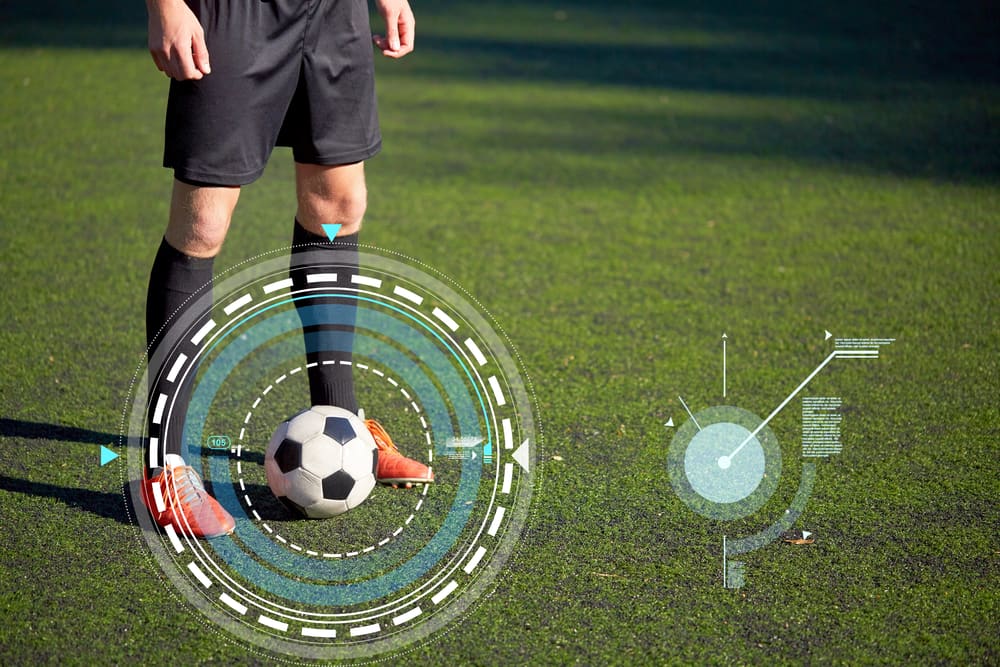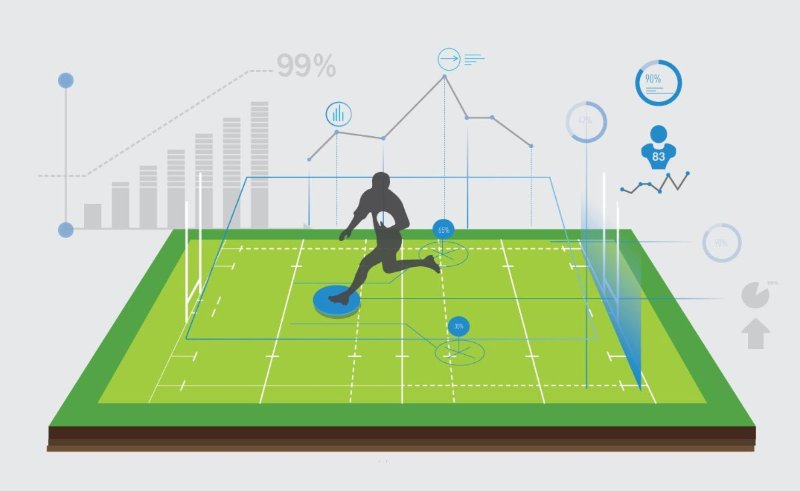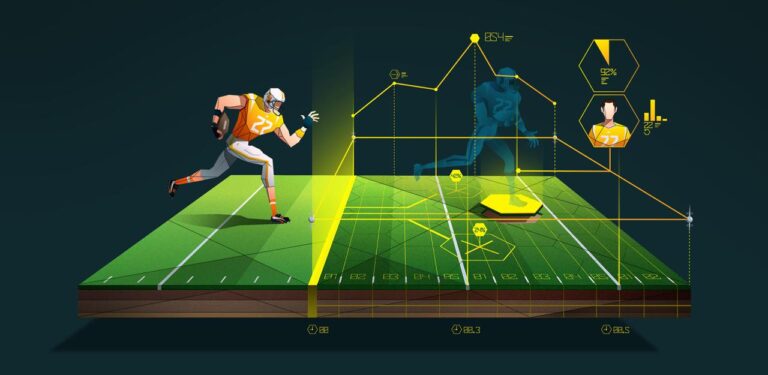In the relentless pursuit of peak athletic performance, the landscape of sports training has been utterly transformed by an unprecedented technology revolution. Gone are the days of relying solely on intuition and observation; today, athletes, coaches, and sports scientists leverage an arsenal of cutting-edge tools and data-driven insights to unlock human potential like never before. From wearable sensors tracking every physiological metric to artificial intelligence analyzing complex movement patterns, training tech is no longer a luxury but a fundamental component of elite preparation. This comprehensive article delves into the profound impact of this technological evolution, exploring the innovations that are redefining how athletes train, recover, and compete. We’ll examine the scientific underpinnings, practical applications, and the ethical considerations that accompany this exciting new era in sports.
Wearables and Biometric Monitoring

At the forefront of the training tech revolution are wearable devices and sophisticated biometric monitoring systems. These tools provide real-time, granular data that was previously unimaginable, offering unprecedented insight into an athlete’s physiological state.
Key Innovations in Wearable and Biometric Tech:
- Heart Rate Variability (HRV) Monitors: Beyond basic heart rate, HRV measures the variation in time between heartbeats. This metric provides crucial insights into the balance of the autonomic nervous system, indicating an athlete’s recovery status, readiness for training, and overall stress levels. Low HRV often signals fatigue or overtraining, allowing coaches to adjust workloads proactively.
- GPS Trackers and Accelerometers: Integrated into vests, shoes, or specific equipment, these devices track an athlete’s movement patterns, speed, distance covered, acceleration, deceleration, and even direction changes. In team sports, this data helps quantify workload, analyze tactical movements, and assess player fatigue during practices and games. For individual sports, they provide precise data on pacing and efficiency.
- Sleep Tracking Devices: Quality sleep is paramount for recovery and performance. Wearable devices and smart mattresses track sleep cycles, duration, disturbances, and even breathing patterns. This data helps athletes optimize their sleep hygiene, ensuring they get adequate restorative rest to adapt to training loads.
- Continuous Glucose Monitors (CGMs): Initially used for medical purposes, CGMs are gaining traction in elite sports. They provide real-time blood glucose readings, allowing athletes and nutritionists to precisely monitor how different foods and activities affect energy levels, enabling optimized fueling strategies before, during, and after training sessions.
- Body Composition Scanners: Advanced tools like DEXA scans and bioelectrical impedance analysis provide accurate measurements of body fat, lean muscle mass, and bone density. This helps athletes tailor their nutrition and strength training programs to achieve optimal body composition for their specific sport.
- Muscle Oxygenation Sensors: These devices measure the amount of oxygen in an athlete’s muscles. This can indicate how efficiently muscles are using oxygen during exercise, helping to fine-tune training intensity zones and identify potential limiting factors in endurance.
- Smart Apparel and Smart Patches: Beyond wristbands, sensors are now being integrated directly into compression garments, patches, and even insoles. These can monitor everything from muscle activity (EMG) and skin temperature to hydration levels, offering non-intrusive, continuous data streams.
Advanced Analysis and Biomechanical Feedback
The ability to analyze an athlete’s movement with extreme precision has revolutionized technique refinement, injury prevention, and performance optimization.
Technological Advancements in Performance Analysis:
- High-Speed Video Analysis: Ultra high-frame-rate cameras capture every nuance of an athlete’s movement, allowing coaches and biomechanists to meticulously analyze technique, identify inefficiencies, and pinpoint areas for improvement that are invisible to the naked eye. This is crucial for sports like golf swings, pitching motions, and sprint mechanics.
- 3D Motion Capture Systems: Using multiple cameras and reflective markers on an athlete’s body, these systems create a detailed 3D model of movement. This allows for precise measurement of joint angles, forces, and velocities, providing unparalleled insights into biomechanics and enabling highly specific technical corrections.
- Force Plates and Pressure Sensors: Integrated into gym floors, running tracks, or even footwear, force plates measure the ground reaction forces produced by an athlete. This data helps assess power output, balance, explosiveness, and asymmetries in movement, crucial for injury assessment and plyometric training. Pressure sensors in insoles analyze foot strike patterns and weight distribution.
- Electromyography (EMG): EMG measures the electrical activity produced by muscles. This helps identify which muscles are engaging during specific movements, how efficiently they are firing, and if there are any imbalances or weaknesses that could lead to injury or hinder performance.
- Computer Vision and AI Analysis: Artificial intelligence, particularly machine learning algorithms, can now analyze vast amounts of video and motion capture data to automatically identify patterns, quantify technique deviations, and even predict injury risk based on subtle movement irregularities. This automates and enhances what human eyes can do.
- Virtual Reality (VR) and Augmented Reality (AR) Training: VR is used for immersive simulation, allowing athletes to practice decision-making in game-like scenarios without physical exertion (e.g., a quarterback practicing reads). AR overlays digital information onto real-world views, providing real-time feedback on technique during practice.
Optimizing Rejuvenation and Injury Prevention
The adage “you don’t get stronger in the gym, you get stronger recovering from the gym” rings truer than ever with the advent of recovery-focused training tech.
Innovations in Recovery and Injury Management:
- Smart Compression Garments: These garments, sometimes embedded with sensors or designed with specific material properties, aid in blood flow, reduce muscle oscillation, and accelerate recovery by minimizing muscle soreness and swelling.
- Percussion Therapy Devices: Handheld massage guns and similar devices use rapid percussive movements to target deep tissue, increase blood flow, release muscle knots, and reduce post-exercise soreness, speeding up recovery.
- Cryotherapy and Cold Plunge Technology: Controlled cryotherapy chambers (full-body or localized) and advanced cold plunge systems expose athletes to extremely cold temperatures, reducing inflammation, promoting blood circulation, and accelerating muscle repair.
- Normatec and Pneumatic Compression Systems: These devices use sequential pneumatic compression to enhance blood flow, reduce swelling, and facilitate lymphatic drainage in limbs, significantly aiding recovery after intense exertion.
- Targeted Red Light Therapy (Photobiomodulation): Specific wavelengths of red and near-infrared light are applied to muscles and tissues to promote cellular repair, reduce inflammation, and accelerate healing processes. This technology is gaining traction for both performance and recovery.
- Advanced Sleep Monitoring and Environmental Control: Beyond tracking, smart beds and environmental controls optimize sleep conditions by adjusting temperature, lighting, and sound, creating the ideal restorative environment tailored to an individual athlete’s needs.
- AI-Driven Injury Prediction: By analyzing vast datasets of training load, biomechanics, recovery metrics, and past injury history, AI algorithms can identify patterns and predict an athlete’s susceptibility to certain injuries, allowing for proactive intervention and training adjustments.
Integrated Platforms and Performance Ecosystems

The true power of modern training tech lies in the integration of various data streams into cohesive performance management platforms, creating a holistic view of the athlete.
Integrated Performance Management Systems:
- Centralized Data Dashboards: All data from wearables, analysis systems, and medical records are aggregated into single, intuitive dashboards. This allows coaches, trainers, and athletes to view a comprehensive profile, identify trends, and make informed decisions.
- Performance Analytics Software: Specialized software analyzes the aggregated data, identifying correlations between training load and performance, predicting fatigue levels, and pinpointing areas for targeted intervention. These platforms often use machine learning to uncover hidden insights.
- Personalized Training Programs: Based on continuous data input, AI-powered systems can generate highly personalized training programs, adjusting intensity, volume, and specific drills in real-time to optimize adaptation and minimize injury risk for each individual athlete.
- Coach-Athlete Communication Platforms: Secure digital platforms facilitate seamless communication between coaches and athletes, allowing for quick feedback, sharing of training plans, and remote monitoring of progress.
- Interdisciplinary Team Collaboration: These integrated systems enable seamless collaboration between coaches, strength and conditioning specialists, nutritionists, sports psychologists, and medical staff, ensuring a unified and holistic approach to athlete development.
- Cloud-Based Data Storage: All data is stored securely in the cloud, allowing for remote access and long-term analysis of an athlete’s development over their career, identifying patterns and optimizing long-term planning.
- Predictive Modeling for Peak Performance: By analyzing historical data and current metrics, advanced models can predict an athlete’s readiness for competition, guiding coaches on when to push and when to rest to ensure peak performance at critical moments.
Next-Gen Tech and Future Possibilities
The training tech revolution is far from over, with ongoing research and development continually pushing the boundaries of what’s possible, promising even more sophisticated tools for athletic enhancement.
Future Trends and Innovations in Training Tech:
- Non-Invasive Brain-Computer Interfaces (BCIs): While still largely experimental in sports, BCIs could potentially be used to enhance focus, reduce anxiety, or even optimize motor learning by directly influencing brain activity during training.
- Advanced Predictive Analytics with Deep Learning: AI models will become even more sophisticated, capable of not just predicting injuries but optimizing complex multi-variable training plans with incredible precision, potentially even predicting career trajectories.
- Personalized Genetic and Microbiome Analysis: Tailoring training and nutrition based on an athlete’s unique genetic predispositions and gut microbiome composition could unlock new levels of individualized optimization, from nutrient absorption to recovery rates.
- Robotics and Exoskeletons in Rehabilitation: Robotic systems and passive exoskeletons could assist in rehabilitation, providing precise, repeatable movements for recovery, and potentially even aid in strength training by providing variable resistance.
- Smart Environments and “Internet of Sport Things”: Training facilities themselves will become “smart,” with integrated sensors and AI controlling environmental factors (temperature, humidity), dynamically adjusting equipment settings, and providing ambient feedback.
- Gamification of Training: Incorporating game-like elements, challenges, and rewards into training programs using AR/VR and interactive platforms to increase motivation, engagement, and adherence, especially for younger athletes.
- Digital Twin Technology: Creating a “digital twin” of an athlete – a highly detailed, constantly updated virtual model – that can simulate responses to different training stimuli, predict outcomes, and optimize interventions without physical risk.
Ethical Considerations and Challenges
While training tech offers immense benefits, its rapid advancement also raises important ethical questions and practical challenges that must be addressed.
Ethical and Practical Considerations:
- Data Privacy and Security: The collection of highly sensitive biometric and performance data raises significant concerns about privacy, data ownership, and the potential for misuse or breaches. Robust security protocols are paramount.
- Over-Reliance on Technology: There’s a risk of coaches and athletes becoming overly reliant on data and tech, potentially neglecting the importance of intuition, human observation, and the athlete’s subjective feedback.
- Technological Divide and Equity: Access to cutting-edge training tech often depends on financial resources. This could create an unfair advantage for well-funded teams and athletes, widening the gap between elite and developing programs.
- Athlete Well-being and Mental Health: The constant monitoring and pressure to optimize every metric could lead to increased anxiety, burnout, or an unhealthy obsession with data, impacting an athlete’s mental health.
- Defining “Natural” Performance: As technology becomes more integrated, there’s a philosophical debate about where the line is drawn between natural human performance and technology-enhanced capabilities, particularly in competitive contexts.
- Ethical Use of Predictive Analytics: While injury prediction is beneficial, using AI to predict a young athlete’s career potential or susceptibility to certain conditions raises ethical questions about labeling and potential discrimination.
- Interpretation and Misinterpretation of Data: The sheer volume of data can be overwhelming. Proper training is required for coaches and athletes to correctly interpret the data and apply it effectively, avoiding misinterpretations that could lead to suboptimal decisions.
- Cost and Implementation Challenges: The high cost of advanced training tech can be prohibitive for many organizations. Furthermore, integrating new technologies into existing training workflows requires significant investment in training personnel and adapting practices.
- Regulatory Frameworks: As technology evolves, regulatory bodies and sports federations will need to develop clear guidelines on what technology is permissible, how data should be handled, and how to ensure a level playing field.
The Human Element
Despite the technological marvels, the human element remains the irreducible core of athletic success. Technology is a tool, not a replacement for dedication, passion, and human connection.
The Enduring Importance of the Human Factor:
- Athlete’s Intuition and Self-Awareness: While data provides objective insights, an athlete’s own feeling, self-awareness, and ability to listen to their body remain crucial. Technology should augment, not override, this innate understanding.
- Coach-Athlete Relationship: The trust, communication, and motivational aspects of the coach-athlete relationship are irreplaceable. Technology can enhance this relationship by providing shared understanding, but it cannot replace genuine human connection and mentorship.
- Resilience and Mental Toughness: No amount of technology can instill true mental toughness, the ability to persevere through pain, setbacks, and intense pressure. These are forged through experience, character, and psychological training.
- Passion and Drive: The intrinsic motivation, the deep passion for the sport, and the unwavering drive to be the best cannot be measured or manufactured by technology. This human fire is the ultimate engine of high performance.
- Adaptability and Creativity: In the dynamic environment of competition, an athlete’s ability to adapt on the fly, make creative decisions, and improvise under pressure is paramount – qualities that technology can inform but not replicate.
Conclusion
The “Sports Training Tech Revolution” highlights a transformative era in athletic development, profoundly reshaping how athletes train, compete, and recover. This revolution is characterized by the widespread integration of advanced technologies such as artificial intelligence (AI), wearable devices, data analytics, virtual and augmented reality, and sophisticated biomechanical analysis tools.
These innovations enable unprecedented levels of performance optimization, offering personalized training programs tailored to individual athlete needs, real-time feedback on performance metrics, and precise insights into movement mechanics. Crucially, technology is also playing a significant role in injury prevention and rehabilitation by identifying potential risks and aiding recovery processes. Coaches and support staff benefit from data-driven decision-making, allowing them to fine-tune strategies and maximize athletic potential. As technology continues to advance, the future of sports training promises even more immersive, adaptive, and efficient methods, fundamentally changing the landscape of athletic achievement.



